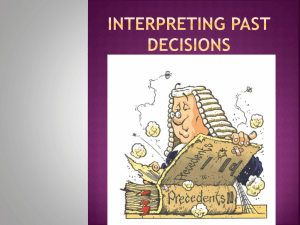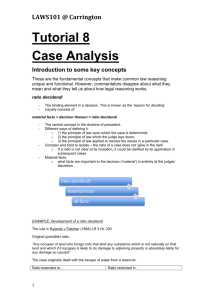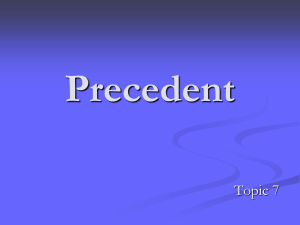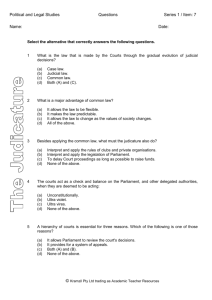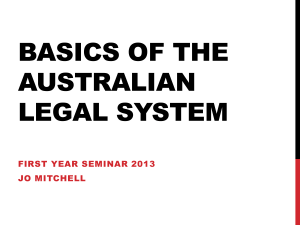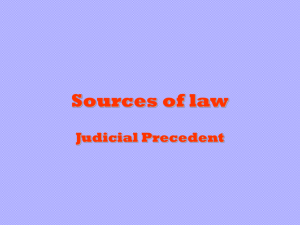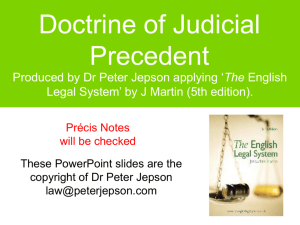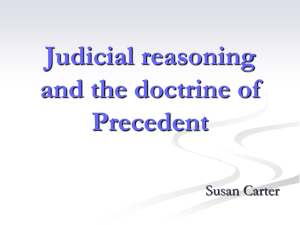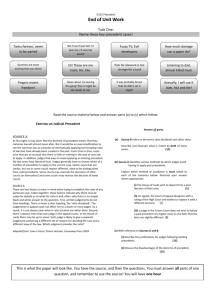precedent intro
advertisement
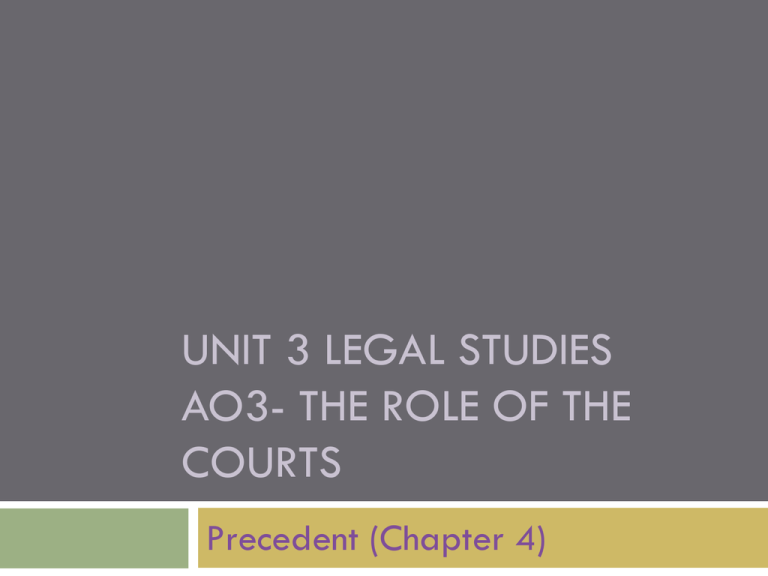
UNIT 3 LEGAL STUDIES AO3- THE ROLE OF THE COURTS Precedent (Chapter 4) What is common law? A system based on individuals coming before the courts to settle disputes. Today many of the common law principles have been written into statute law. If there is ever a conflict between the two, statute law will prevail. Judge-made law Although judges main role is to adjudicate cases and settle disputes, they also have a secondary role as lawmakers. Judges can make law in two ways: 1. Judges make law on a new issue that arises in a case before them, or on which there is no previous common law or statute. 2. Through the interpretation of legislation as it applies to the case before them (statutory interpretation) Court hierarchy The doctrine of precedent, relies on a hierarchy of courts to effectively operate What is a precedent? Is the reported judgement of a court that sets a principle in law. The reason for the decision, the ratio decidendi, becomes a statement of court-made law. Doctrine of precedent. The process and rules used by courts to decide whether they should use the legal principles established in a previous case. Judges follow the previous decisions of higher courts in similar or like cases. This is also known as stare decisis, which means to stand by what has been decided. Ratio decidendi ‘The reason for the decision’ Not everything said by a judge in the course of reaching the decision is a precedent. ONLY the ratio decidendi forms the legal principle to be used in future cases. According to the doctrine of precedent, in cases that have similar circumstances, the ratio decidendi of higher courts will be binding on all lower courts (in the same court hierarchy) Obiter dictum ‘Statement made by the way’ A statement or opinion made by the judge within the judgement is not binding (does not have to be followed in the future), however it can form a persuasive precedent. That is can assist judges in the future cases. Stare decisis ‘ To stand by what has been decided’ Lower courts must stand by, or follow, the decisions of the higher courts in ‘like cases’. o o o Precedents can only be set in higher courts. All lower courts are bound by the decisions of higher courts in the same hierarchy, Decisions of courts at the same level, or equal standing, are not binding. Binding VS persuasive precdents Precedents can either be binding or persuasive. Binding: a legal principle that MUST be followed. The doctrine of precedent depends on lower courts following the decisions of higher courts, when a similar or like case comes before them Persuasive: a convincing argument, but one that does not have to be followed because it is not binding. It is not a decision made by a higher court in the same court hierarchy in a case with similar facts. o o o Obiter dictum Ratio decidendi of courts of the same level or lower in the same hierarchy The decision of a court in another hierarchy How precedent operates.. Learning Activities Summary: Common law, Precedent, doctrine of precedent, ratio decidendi, obiter dictum, stare decisis, binding precedent, persuasive precedent. Complete precedent folio questions 1-5 pg 170 Precedent questions.
